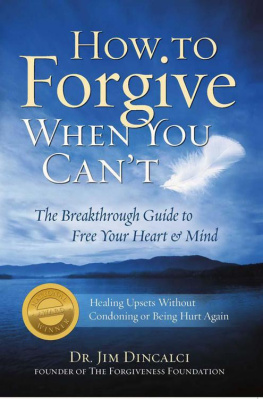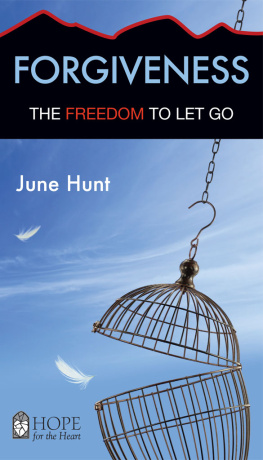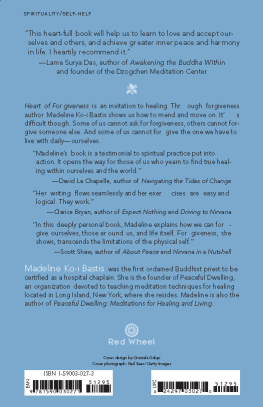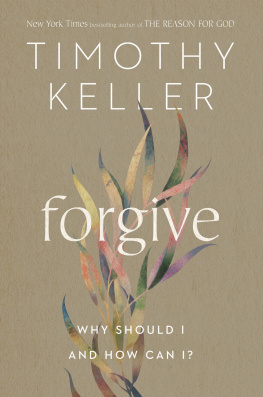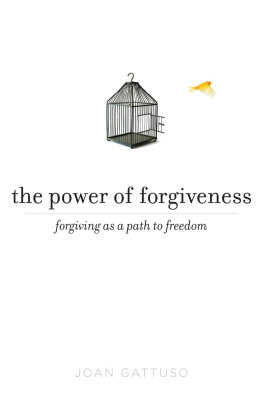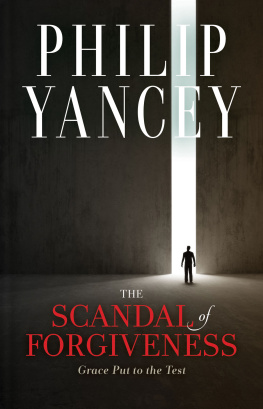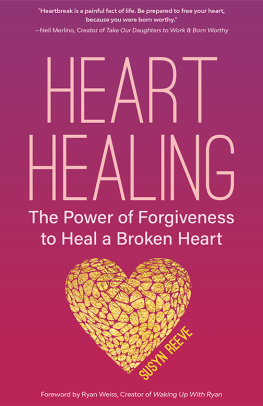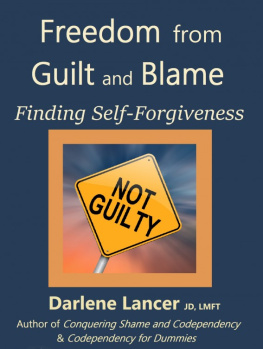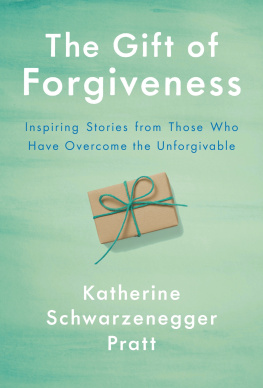HowTo
Forgive
WhenYou
Cant
by Dr. Jim Dincalci
Copyright 2010 by James Dincalci. All rights reservedunder
theInternational and Pan-American Copyright Convention.
Second printing
Publisher: The Forgiveness Foundation , a 501c3 non-profit charity
11312 US 15-501 N, Suite 107-4, ChapelHill, NC 27517 www.ForgivenessFoundation.org
The material inthis book may not be copied or reproduced in any form, in whole or in part,without the express permission of the author or The Forgiveness Foundation. Sendrequests for permission to use the material in this book to the PermissionsDepartment, The Forgiveness Foundation, at the address above; or fax to262-244-3823; or to: RuahPress@forgivenessfoundation.org
Profit from this bookgo toward building caring families and communities worldwide by people helpingeach other heal blame, resentment and grudges.
Owing to thelimitations of space, acknowledgement of permission to quote from previouslypublished materials will be found at the end of the bibliography.
Limit ofLiability/Disclaimer of Warranty: While the publisher and author have usedtheir best efforts in preparing this book, they make no warranties with respectto the completeness of the contents of this book. Some of the advice andstrategies contained herein may not be suitable for your situation. Theinformation and opinions provided in this book are believed to be accurate andsound, based on the best judgment of to the author, but readers who fail toconsult with appropriate mental health professionals assume the risk of anyproblems. Neither the publisher nor author shall be liable for any loss of healthor profit or any commercial damages, including but not limited to special,incidental, consequential, or other damages.
The Forgiveness Foundation books andproducts are available through our website. To contact us directly call withinthe USA - 919-799-2113 or fax 262-244-3823.
We also publish in a variety ofelectronic formats.
Library of Congress Catalogue Number: 2009937128
___________________________________________________________________________________________________
There are raised letters and numbers atthe end of some sentences. These are either references to publications where I foundthe information or notes giving more data on what was said. See the Notessection at the end of the book for the references in each chapter.
Readers should be awarethat Internet Web sites offered as citations and/or sources for furtherinformation may have changed or disappeared between the time this was written andwhen it is read.
Table of Contents
PART 1 -
1 -
2 -
3 -
4 -
PART II - Going Deeper
5 -
6 -
7 -
8 -
9 -
PART III - The Truth behind the Resistance
10 -
11 -
12 -
PART IV - Doing the Work
13 -
14 -
PART V After the Process
15 -
16 -
___________________________________________________
Foreword
I am the Director of the Stanford Forgiveness Projects andhave written two bestselling books on forgiveness, Forgive for Good and Forgivefor Love. My work is used all over the world to help people to forgive. Iconsider Jim Dincalci to be my peer in this work. He is one of those teachersthe New York Times has not yet featured. My work has been featured in the NewYork Times and all other major media. That is in part because I developed myforgiveness work while working at Stanford University. Jim developed hisforgiveness program through his life experience, desire to be of help and hismultidimensional education. The bottom line is we are both saying the samething. We are preaching from the same pulpit.
This is a really good forgivenessbook. It is clear, helpful and wise and anyone who brings a hurt or grievanceto this work will be helped. I recommend How to Forgive When You Cantboth because of the book and because of Jim. I have known Jim for 7 years. Sinceour first meeting, I have known him to be sincere and determined to help peopleforgive. The first time we met was before I was to give a book talk at a bookstorenear Jims home. Before the book talk, he contacted me to meet and we talked forgivenessfor a long dinner and walk.
When Jim and I first met in Sonoma, California,we talked about the projective defense mechanism where we picture our wounds. Hesaid to me that we make forgiveness permanent by this simple process, which Ifound creative and strong:
A. To pull back the projection (forgivingthe other because we have done the same thing in similar manner). Then
B. To do self-forgiveness so that there is no need to project the personalguilt onto anyone else through blame.
Jim is the only person that I knowof who worked full time on forgiveness work outside of those employed in a Universitysetting. The last time I saw Jim was on the other coast and again we talked offorgiveness and of life over a long dinner. Again, I found that mostly we wereon the same page and that Jim was sincerely committed to helping people throughforgiveness.
Not only does this book have a strongpsychological basis but Jim has added a spiritual but non-religious dimension.Thus, his book can be used by pastors, ministers and chaplains to help theirparishioners forgive, in addition to therapists, lawyers and counselors ingeneral. As Jim says in the first chapter, he set about to create a manual tohelp people learn how to help others forgive and of course to do their ownforgiving. It took him 9 years and he has used all of what he found in hisclasses to create this book. Jim is clear that his vision of forgiveness hasbeen a driving force in his life, and this book attests that it has beenfruitful.
This is not a Morons Guide toForgiveness or a Forgive for Dummies book. It is thoughtful and complete and isthe product of a lot of hard work and effort. It is for the person who wantsto truly leave their wounds behind and who is willing to work at it. And, asimportantly it is for the professional who wants to help his/her clientsforgive and live a more peaceful and fulfilling life.
Frederic Luskin , Ph.D.
Acknowledgements
No one writes a book alone. Everyone whohelped me on this book is dear to me. The trite term I couldnt have done itwithout you. is true. The changes I went through while writing this book weredue to their support. I am blessed to have such first-rate friends, who haveall been enthusiastic and encouraging about the book.
Thank you to Angeles Arrien , PhD, whose support through mypsychotherapy training and far beyond has been invaluable. The influence of hertrainings in cross-cultural healing carried me through my own forgivenesstransformation in 1993.
Thank you to Dr. Fred Luskin , a forgiveness pioneer, whoacknowledged the validity of my original premises of the Power Forgiveness Processand for his encouragement through the years.
Thank you to Loralee Denny, RobWilliamson, Dr. Ken Lebensold, and Dee Cseh for their work on formatting andthe final edit of the book; to Ginnie Ward, Cate Griffiths and Gayle Shirley for editing earlier version of the book; to Ken Urquhart forhis work on permissions for the book; and to Chris Many for is help in namingthe book.
Thank you very much to Tami Dever atTLC Graphics for her wisdom, blessings, coordination, and skill to produce a lovelybook inside and out. Praise for her staff Marisa Jackson for her stellar workon the cover and Erin Stark for her aesthetic eye to make the inside appealing.
Thank you to Terri Gamboa, JocelynCallard, Nancy Many, and Laurel Davar for their ideas, work, and support in theearly phases; to Susan Johnson for giving substance to the initial writing bytranscribing one of my university classes. Thank you to Michael Berkes, PhD forhelping laying out the plan for the book.

